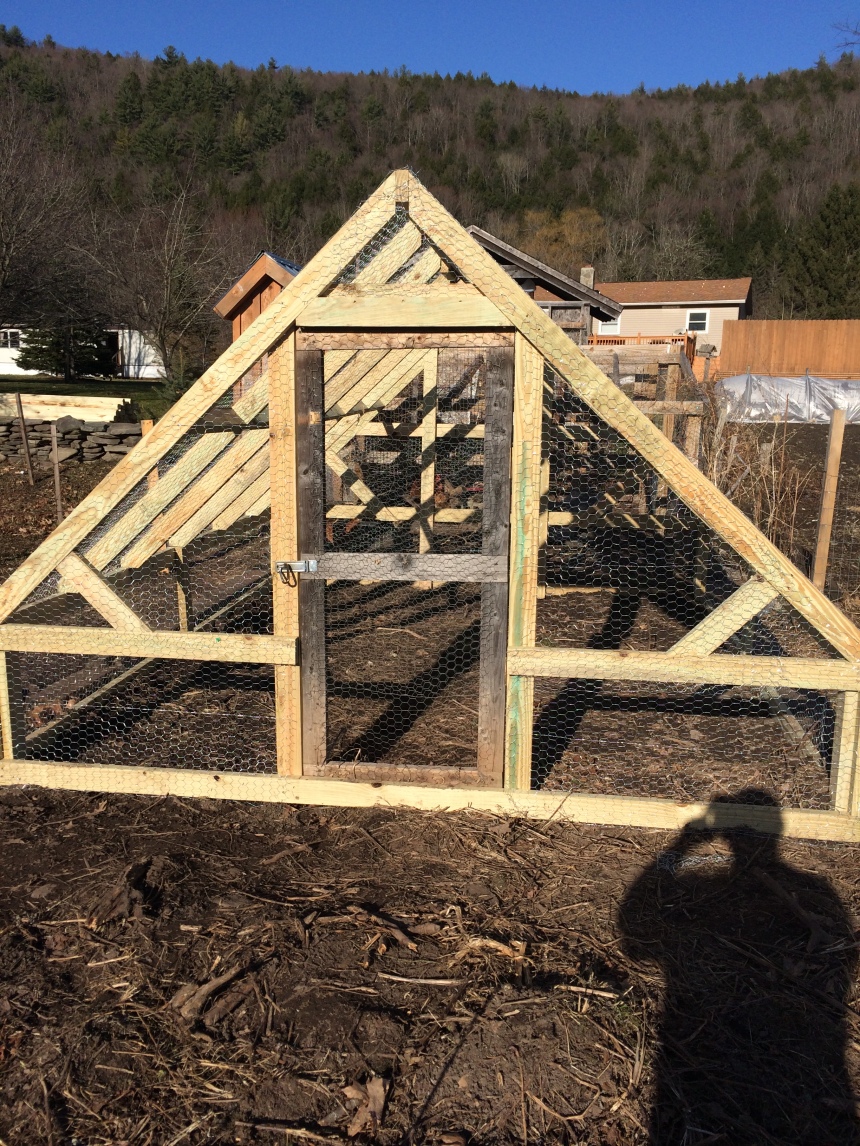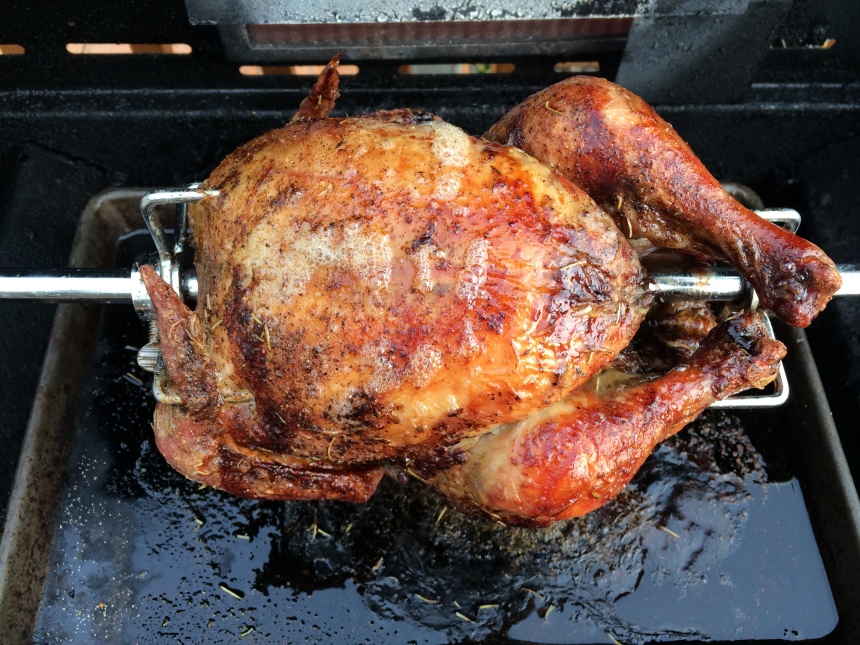Raising Meat Chickens, you will never go back to store-bought again!


If raising chickens for eggs is the gateway to homesteading, then raising them for meat is stepping through that gate with both rubber boots. Once you have raised your own meat, and see the difference from what you buy in the store, you will never go back. We finally decided to raise meat birds after a few years of raising laying hens. We decided to raise Cornish Crosses because of their excellent feed conversion rate. You get one pound of meat for every two pounds of food you feed them. We also wanted to start with a bird that we were used to eating, and these are the same birds that the U.S. poultry industry uses. Cornish Crosses also only take eight weeks to raise. This would enable us to raise more than one batch in a year. We ordered 25 chicks from Meyers Hatchery, as this was the minimum number to receive free shipping. Every dollar counts when you are homesteading. We set up an eight foot diameter brooder, and we chose to make it a circle to keep chicks from getting stuck in corners and accidentally killed. Finally our long awaited chicks arrived by mail.
They were so cute and fuzzy, and we wondered how we would ever eat such cute animals. We immediately realized that these chicks were much different than laying hens. They ate almost non stop, and pooped almost as much. We gave them unlimited food for a few days but quickly cut back to two feedings a day. We learned with our research that they will eat themselves to death if you don’t restrict their feed. After only a week, they had more than doubled in size and became something less than cute .

In another week they were even larger and began to resemble a store bought chicken with legs. They were a little stinky, so we were looking forward to getting them outside.

We constructed a run with a place for them to get out of the sun, and waited for them to get their feathers so we could move them outside.


They really didn’t move around much and were very happy to just eat and drink all day. As they grew, we looked forward all the protein they would provide our family.

They were also eating a ton of feed. They truly had a one track mind.
We checked their weight regularly and soon they were ready for their big day.

We read up on butchering, and watched videos. It’s a really is a simple process. The biggest issue is plucking, so we would recommend borrowing or buying a plucker. We still don’t own one, but plucking 25 chickens takes two people most of a whole day, so we plan on purchasing one this year. Once the feathers are removed/plucked they begin to resemble the chicken we are all used to seeing in the store. It only takes a few minutes to butcher and eviscerate (remove the innards) a chicken, and then they are immediately cooled in ice water.
Once they are cooled, we wash them thoroughly and we place them in shrink bags which are inexpensive and easy to find online. They are cheaper in bulk, so buy a few year’s worth at once to save a few dollars, again every dollar counts.
The first time we butchered chickens it was a few days before we felt like eating one. We were nervous and unsure if we would enjoy them. The first thing we noticed is that they took a little longer to cook. They are not injected with broth like the ones in the store. They also were not slimy and didn’t need a diaper like store bought. When you finally taste one you know that all of your hard work was worth it. Guess what? They taste like chicken, they are not bland and have a wonderful flavor, and they also do not taste like salt like the ones from the store. The second time you butcher chickens you will have one for dinner that night, in fact I get hungry when I butcher them now. So if you have ever thought about raising meat bird, pull up your rubber boots and jump in. You will be rewarded for your effort in legs and breasts, it doesn’t get much better than that.










We have our first lot of hatching eggs in te incubator now and the goal is to breed and sell the eggs, and of course eat the eggs as well. But I know the day will come when we eat our chickens, and I’m pretty nervous about it! Keeping in mind, up until recently I was a vegetarian for nine years, and I struggle to keep the disconnect of “for food” and “animal friend”.
Reading this is helpful. Knowing I’m not the only one who will faulted before plunging in and eating a home raised bird helps me know that I’ll probably be able to get there in the end!
LikeLike
Thank you so much it isn’t easy that is for sure but in it he end you know they were happier animals than those at a commercial farm good luck with yours it’s so rewarding if you have any questions we would be happy to answer
LikeLiked by 1 person
Thank you! Like I said, we’re nowhere near ready to be slaughtering anything, but I’ll be keeping a close eye on your blog and I’ll be sure to pester you with any questions! 🙂
LikeLike
anytime
LikeLiked by 1 person
Wonderful post! We’re planning to raise our own meat birds too, but probably not until next year (just trying to get our feet under us this year). Do they need a roost like egg-laying hens or can they even get up off the ground?
LikeLike
No roost needed they won’t move around too much and in 8 weeks they are gone if you have any questions shoot us an email
LikeLiked by 1 person
Thanks for the info, I have been kicking the idea of getting a few chickens for eggs and may have to pick your brain in the near future.
LikeLike
Any time laying hens are really great and the biggest problem is predators
LikeLiked by 1 person
I appreciate it. Potential predators have been the main reason for hesitation to this point. I literally live on a bayou in south Louisiana and worry that the snakes may get to the birds.
LikeLike
Wow snakes here are pretty small other than rattlers but they only come down in the valley in the summer
LikeLike
Really great post! Thank you for including pictures of them post plucking!
LikeLiked by 1 person
Thanks for taking the time to read it we love this life style
LikeLike
I find that a lot of blogs don’t include that unless you specifically look for a post on butchering.
LikeLiked by 1 person
They look just like the chicken you usually eat post plucking
LikeLike
How did you butcher them? I’m interested in the method you used, but also how you kept it very quick and the chickens unaware of what was happening to other chickens! I’m pretty sure I could wield the axe, but I’m concerned about butchering half a dozen of them without any of them being terrorized.
LikeLike
We use a hatchet which is very quick we butcher them away from where the coop is so the other birds don’t see. We carry them upside down by the feet which seems to calm them after a minute then put their heads on the block. It’s important to hold them away from the block after you kill them or they will break their wings on it when they flap them . I’ve never tried killing cones but I hear they work well too
LikeLike
First time chicken parent! We have some Cornish rocks and they are losing their feathers and look so gross. Is that normal? It’s only them we have 3 egg layers that are chicks yet and 2 ducks and none of them are losing feathers so o don’t think it’s mites or anything else like that. Just wondering if youve had that before.
LikeLiked by 1 person
We had trouble with our first chickens pulling out each other’s feathers so we moved them to a larger area where they could get away from each other it seemed to help I have never had them lose them
From disease hope this helps god lick our meat birds are very ugly when they transition to feathering out
LikeLike
Thanks!
LikeLiked by 1 person
Hope it helps
LikeLike
You may find this homemade chicken plucker useful. Costing less than $10 or $15 dollars to build.
https://survivalfarm.wordpress.com/2010/09/05/chicken-plucker-home-made-less-than-10-00/
youtube video link.
Good luck and good eating
LikeLiked by 1 person
Thanks so much that is the worst part
LikeLike
Reblogged this on two branches homestead.
LikeLike